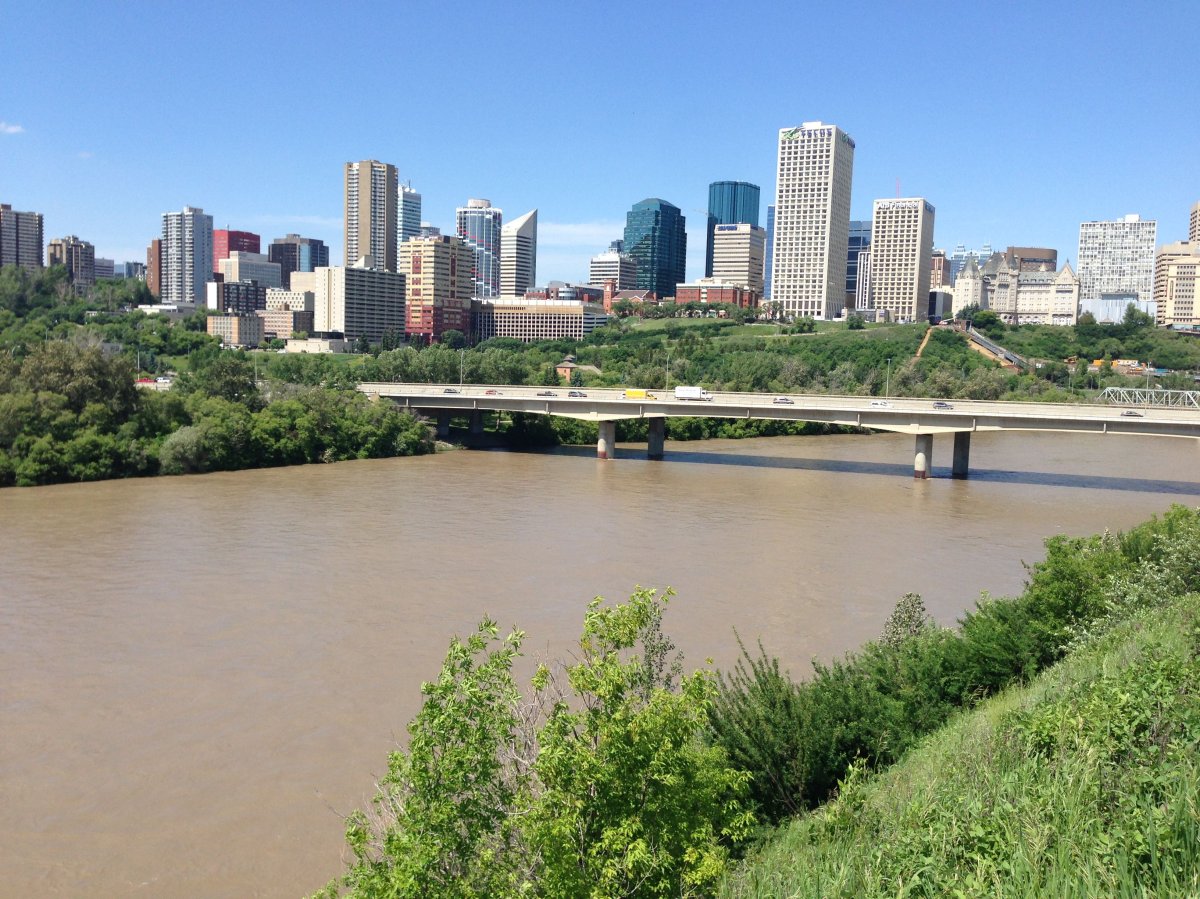Edmonton is one of the fastest-growing cities in Canada and according to a new report from the city, that isn’t expected to slow down anytime soon.

The 2017 Annual Growth Monitoring Report was released on Friday. The report offers a snapshot of growth, demographics, land use and development, development patterns and trends, non-residential growth and housing in Edmonton. The information gathered in the report highlights some of the challenges of a rapidly growing city, while helping the city with decision-making.
Here are a few of the highlights from this year’s report. (Read the full report below).
Edmonton is young and growing fast
Over the past 10 years, Edmonton’s population has increased by 28 per cent. With 932,546 people, Edmonton is home to 2.7 per cent of the total population of Canada.
Since the federal census in 2011, Edmonton has grown by 14.8 per cent, making it the fastest-growing major city in Canada. If this pace of population growth continues, the Capital Region Board anticipates Edmonton will need a minimum of 150,000 new housing units by 2040.
READ MORE: Census 2016: 4 Edmonton ‘burbs are booming
According to the CRB, the Capital Region will have roughly the same population as the current metro-area populations of Vancouver, Portland, Denver, Stockholm and Liverpool by 2044 – 2.2 million.
Edmonton also has one of the youngest populations in Canada, with 31 per cent of its population under the age of 25. The average age in Edmonton is 37.7, compared to 41 in the rest of the country.
More than $8B spent on construction
While the number of building permits issued in Edmonton was down in 2016, the value of residential and industrial construction totalled $8.02 billion. That’s up from $4.8 billion in 2015.
READ MORE: 4,000 construction workers in Edmonton’s core ‘light in a sea of gloom’ for economy
A total of 14,328 residential and industrial building permits were issued in 2016.
Edmonton increases infill units
While the city just missed its target of having 25 per cent of all new residential units be infill properties in 2016, Edmonton added 2,022 new infill units in mature and core neighbourhoods. That’s compared to the 1,701 new infill units built in 2015.
READ MORE: By the numbers: 2 years into Edmonton’s infill housing process
Housing starts dramatically decrease in 2016
Housing starts in Edmonton were down 45 per cent in 2016, after peaking in 2015.
From 2007 to 2016, Edmonton experienced a total of 79,523 housing starts, or an average of 7,952 housing starts per year.
Housing starts peaked in 2015 at 13,311, an increase of 36 per cent over 2014, followed by a decline of 6,048 – or 45 per cent – for a total of 7,263 in 2016. Edmonton has not seen a housing start number this low since 2011.
A weaker labour market, slower migration and reduced consumer confidence have softened the demand for new homes in the city. Plus, higher inventory in both the new and existing home markets prompted builders to slow production.
Building permits, starts and completions significantly drop
With the economic slowdown, overall building permits, starts and completions significantly dropped in 2016. Building starts were down 45.4 per cent compared to 2015, while building permits were down 18.3 per cent and building completions were down 9.5 per cent.
The drop comes after an increase in housing starts in 2015.
Half of Edmonton’s residential housing is made up of single-detached homes
When it comes to residential housing diversity, the majority of homes in Edmonton are single-detached, making up 50 per cent of the city’s residential housing. However, this year’s report also showed a continued shift towards construction of multi-family units. The highest percentage of unit growth last year occurred in apartment units.
READ MORE: Edmonton and Calgary buck the trend with high demand for detached homes
Twenty-three per cent of the city’s housing is made up of one-to-four-storey apartments.
The largest percentage of homes are occupied by two people
When it comes to how many people live in each home in Edmonton, the highest percentage of homes are occupied by two people – at 32.5 per cent.
Twenty-seven point two per cent of homes are occupied by one person, while 16.3 per cent are occupied by three people, 14.3 per cent are occupied by four people and 9.8 per cent are occupied by five or more people.
The majority of Edmontonians own their home
Edmonton has long had higher rates of homeownership than renters, due to a combination of a favourable housing market and an increase in household income.
According to 2011 census data, about 65 per cent of Edmontonians own their home. However, it depends in which area of the city you’re looking.
Edmonton’s core dwelling units are highly dominated by renters at 70.5 per cent. But when you look at the developed areas of the city, just 11.3 per cent of people rent their home.
Graphic by Tonia Huynh, Global News
Read the 2017 Annual Growth Monitoring Report below:












Comments